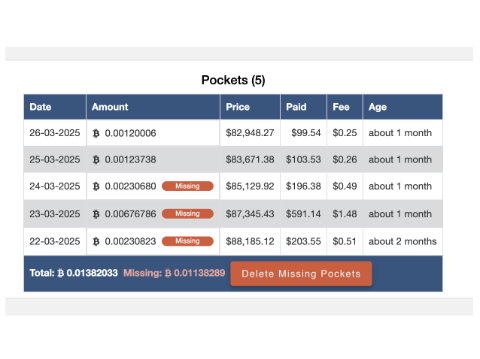Cryptotrader yields now available

Developments around Bitcoin / Cryptotrader (September 2022)
September 20, 2022
New Web App (1.6.7)
February 17, 2023In the new Cryptotrader web app, every user can see the yields of his own trader. The yield is mainly dependent on the exchange rate fluctuations of the Bitcoin price. The larger the fluctuations, the higher the yield. Other influences on the yield are the moment of entry and the invested capital (see also FAQ with an explanation of this ).
Yield comparison
The yield is calculated based on the profit in relation to the invested capital. We make this calculation separately for each trader. With this you can easily compare the yield of cryptotrader with interest at banks, investments in shares or gold.
Cryptotrader yield Comparison
| 2022 | 2021 | 2020 | 2019 | |
|---|---|---|---|---|
| Cryptotrader | 7.1% | 51.4% | 23.6% | 25.9% |
| Bank (EU) | 0.0% | 0.0% | 0.0% | 0.0% |
| AEX | -14.0% | 28.0% | 3.0% | 24.0% |
| Gold | 5.9% | 3.5% | 15.0% | 20.8% |
The calculation
We calculate the yield as follows. For each trader, at the beginning of each month, it is determined what the invested capital is that month. That is the sum of the free USD available in the linked exchange account and the pockets already purchased at the original purchase price. The average invested capital per month is determined by averaging the invested capital at the beginning of the month and the invested capital at the end of the month. This is important because a user can also deposit or withdraw USD from the account that month.
The yield of that month is now the profit of that month divided by the average invested capital that month. This concerns the net profit from which the exchange fees have already been deducted.
Example:
Suppose we have an average invested capital of $2000 and the profit that month is $30. Then the yield of that month is €30 / €2000 = 1.5%
Once we have calculated all monthly yields, we can also use this to calculate the compound yield for the entire year.
Example:
Suppose we have 4%, 2%, 1%, 1.3%, etc.. yields per month then the total yield is 1.04 x 1.02 x 1.01 x 1.013 x etc… = 1.x. The annual yield is then x.
For years that are not (yet) complete, we calculate the annual yield based on extrapolation. This often concerns the first year of entry and the last year that is still running. The calculation then proceeds as follows. We first calculate the average monthly yield based on the months for which we already know the yield. With this average monthly yield we can then make an estimate of the annual yield via extrapolation. The more months of data we have, the more accurate this extrapolation is.
Example:
Suppose we have a monthly yield of 4%, 2%, 1% and 1.3% respectively and we have no further monthly data. Then the average yield per month is (4+2+1+1.3) / 4 = 2,075%. This allows us to estimate the annual yield = 1.02075^12 = 27.9% per year.




